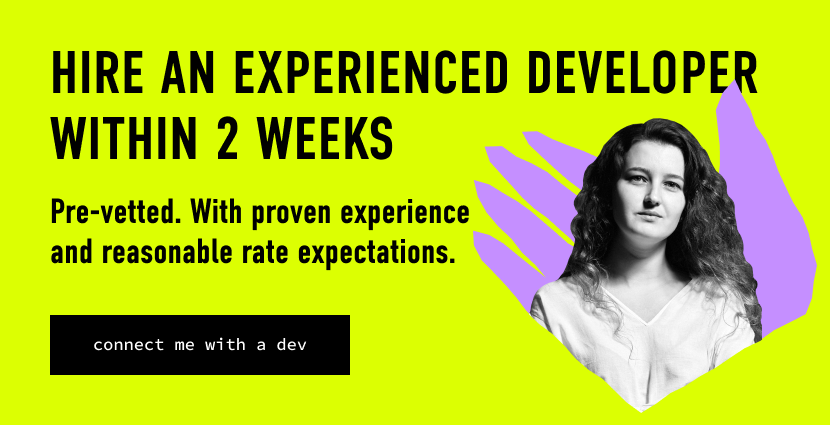CI/CD Engineer

Are you a startup owner wishing to hire the most talented and apt CI/CD developers for your company in a blink of an eye? Or, maybe, you are a CI engineer — eager to get your financial ducks in a row for the year ahead, finding a startup needing skillful hands? Anyways, this job description will come in extremely handy for both categories. Businessmen can analyze its essential components and alter them accordingly while creating job descriptions. Programmers, in turn, can compare their proficiencies to some universal demand scheme and find the weak spots to work with.
The core elements of a CI/CD job description are:
- Company description;
- Job brief;
- Role and responsibilities;
- Requirements;
- Perks and benefits.
Company description for CI/CD Engineer
It’s as simple as that: describe the company you’re hiring for — mentioning its profile, mission/main tasks, plan perspectives, team personnel, and desired augmentations. Who are you, what do you do, where are you planning to be in a year, and who do you need for it? Try to clarify your specifications right from the start so that the potential candidates don’t waste your time for job interviews during which they realize that’s not their cup of tea.
Example:
We are a cutting-edge company dedicated to helping clients efficiently execute, manage and support their product lifecycle management, enterprise applications, and engineering services in a broad spectrum of domains. Our clientele includes hi-tech leaders and IT engineering firms in the aerospace and automotive sectors.
We’ve been helping customers improve their business, environmental and social performance since 2010. Our aces are market intelligence and innovative process organization.
CI/CD engineer job brief
After you’ve described your business, mentioning its key features and peculiarities, it’s high time to characterize the vacancy you’re eager to fill. Tell the candidates who you’re looking for, describe the core responsibilities of this specialist, and mention what kind of team they will join.
Example:
We are one of the top UK hi-tech leaders looking for an experienced Continuous integration / delivery engineer (preferably with a DevOps background). The CI/CD specialist we’d like to hire will be responsible for building, maintaining, and scaling all the production infrastructure. This person will join our excellent team of engineers who formulates solutions to the most intricate problems.
CI/CD engineer role and responsibilities
Ok, we’re done with the general company profiling. Now, it’s high time to enumerate the responsibilities of your perfect CI/CD specialist. They should know what they will be doing for you, right?
Example:
A CI/CD engineer we’re going to hire will:
- Enhance CI/CD tools for integration/operations and work on the full automation of CI/testing;
- Develop, scale, and control strategies, standards, guidelines, and governance of CI systems;
- Design, implement and preserve systems and tools across the cloud stack;
- Co-work with internal development and QA teams to help ensure ultimate quality;
- Keep an eye on documentation infrastructure;
- Resolve troublesome issues along the CI/CD pipeline;
- Directly cooperate with third-party vendors to fix infrastructural problems.
CI/CD engineer requirements
Now, let’s elaborate on the experience baggage a continuous integration engineer should have. What do you require of the perfect candidate? Be specific: this rubric can be an additional sorting tool reducing the number of applications your HR department will have to handle.
Example:
- BS/MS degree in Computer Science, Information Systems, Engineering, or other related fields;
- Remote work experience;
- 4+ years of code writing and app deployment;
- Broad working experience with SVN, GIT, Udeploy, and Jira;
- Hands-on experience in installing, modifying, handling, and monitoring CI/CD pipeline tools;
- Experience in excerpting metrics and automated results from CI/CD security tools
- Knowledge of installing, configuring, operating, and monitoring software security pipeline tools
- Strong knowledge of widespread cloud computing platforms
- Strong understanding of network essentials and system administration exposure
Benefits and perks for CI/CD software engineers
Your company surely has something to offer, right? Here, in the most pleasant and festive section of this job description, you can devote some lines to all the fringe benefits and nice perks every employee will get.
What can it be?
- Days off;
- Sick leave days;
- Bonuses on traveling/self-development or sports;
- Home office bonus (if yours is a remote company);
- Corporate courses or master classes.
Don’t lie — and don’t mention bonuses if they are too insignificant or selective. That’s all secrets we’ve got to share.
Wishing you a pleasant hire!

Need a FAQ? Here it is!
-
What does a CI/CD engineer do?
A CI/CD (Continuous Integration/Continuous Deployment) engineer is responsible for designing, implementing, and maintaining the processes and tools used to build, test, and deploy software. This includes setting up and configuring a CI/CD pipeline, integrating various tools and services, and troubleshooting any issues. Additionally, a CI/CD engineer may also be responsible for monitoring the pipeline and making improvements to increase efficiency and reliability. Overall, the main goal of a CI/CD engineer is to automate and streamline the software development process, allowing for faster and more frequent releases of software.
-
What is a CI/CD simple explanation?
CI/CD stands for Continuous Integration and Continuous Deployment. It is a set of practices and tools that help software development teams frequently integrate new code changes into the codebase and deploy those changes to production environments quickly and reliably.
CI (Continuous Integration) is the practice of automatically building and testing code changes as soon as they are committed to the codebase. This helps to detect and fix integration issues early on before they become a problem.
CD (Continuous Deployment) is the practice of automatically deploying code changes to production environments as soon as they pass the testing and validation stages. This helps customers get new features and bug fixes faster and reduces the risk of human error. -
Is CI/CD part of Agile?
Agile is a methodology for software development that emphasizes iterative, incremental development and delivery, focusing on customer collaboration, flexibility, and rapid response to change. Agile methodologies, such as Scrum and Kanban, provide a framework for teams to work together to deliver small, usable portions of software quickly and frequently.
CI/CD, on the other hand, is a set of practices and tools used to implement the continuous integration and deployment of software. These practices and tools are used to automate the process of building, testing, and deploying software, to make it faster, more reliable, and more responsive to customer needs.
While Agile development methodologies and CI/CD practices complement each other, CI/CD is not a part of Agile methodology. Still, it can be integrated with Agile development methodologies to improve the software development process.
